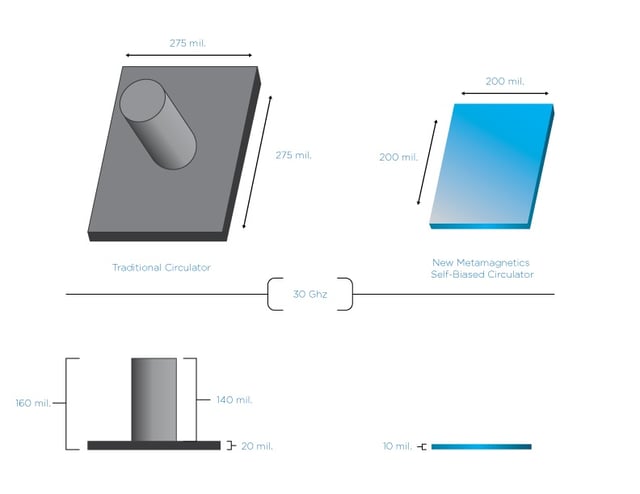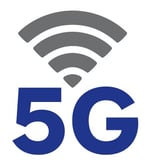5G Is Coming, but Are Your Devices Ready for it?
Self-biased circulators and isolators are going to be important players in the 5G revolution that is just around the corner. Composed of advanced self-biased materials fabricated without rare-earth elements, self-biased circulators are ideal for weight-, size-, and cost-constrained systems. They also ensure maximum isolation without compromise to micro- and millimeter-wave frequencies.
Traditional Circulators Vs. Self-Biased Circulators
A circulator is essentially a ferrite-based, non-reciprocal device with usually three ports. It duplexes two signals into one channel so that only one antenna is required for the functions of transmitting and receiving, thereby doubling the data throughput by enabling full-duplex communications. It can also be configured as an isolator by terminating one of the ports with a matched resistor. In this configuration, it can isolate high-power transmitter circuitry from antenna impedance mismatch.
 At Ka band, the biasing magnet of traditional circulators and isolators attributes to 90 percent of the component size, and this problem is augmented as you move up in frequency and the magnet becomes an even larger portion of the device. By the time you reach 20 GHz in frequency, a traditional circulator can hardly fit in the array spacing for phased array antenna systems.
At Ka band, the biasing magnet of traditional circulators and isolators attributes to 90 percent of the component size, and this problem is augmented as you move up in frequency and the magnet becomes an even larger portion of the device. By the time you reach 20 GHz in frequency, a traditional circulator can hardly fit in the array spacing for phased array antenna systems.
Planar, self-biased circulators manufactured by Metamagnetics not only save space by eliminating the biasing magnet, but also decrease the cost of assembly significantly.
The 5G Revolution
Gartner, Inc. forecasts that the 6.4 billion connected things in use worldwide in 2016, will reach 20.8 billion by 2020. There is an increased need for better, faster communication and connectivity between people, devices, and systems, ranging from smartphones to watches to entire home systems. In order to pipe in enough bandwidth for this precious wireless feed, there just aren’t enough existing frequencies—that’s where 5G comes in.
Whenever a new mobile wireless frequency comes along such as 5G, a higher radio frequency is assigned to it. This is to ensure that information can move at a faster speed without any disruptions. The problem is that higher frequency signals don’t travel as far as lower frequencies, so multiple input and output antennas (MIMOs) may have to be used to boost signals anywhere 5G is offered.
Self-biased circulators and isolators are a more efficient and cost-effective solution to the problem of full-duplex and antenna beam steering than conventional circulators or switches because they are smaller, lighter, resistant to shock and vibration, not dependent on rare-Earth magnet, and extremely economical.
At Metamagnetics, we have the capability to develop our own high-performance materials to build and design unique and innovative high-end RF and power components. Request samples today for evaluation, or contact us to learn more about our self-biased circulators and isolators.

